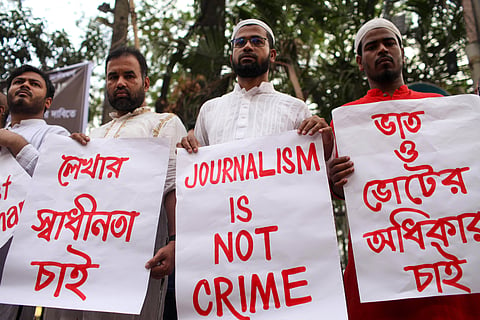The future of Bangladesh’s fragile media freedom
SINCE SHEIKH HASINA was overthrown in August 2024, the Bangladeshi media has entered an uncertain new phase. The biggest threat to the media – Hasina’s dictatorship – may no longer be there, but a climate of repression and self-censorship built up over decades is taking a long time to die. The newspaper editor Mahfuz Anam described the situation as “slippery”, adding that “journalism in Bangladesh has to navigate a very dangerous course, with forces we don’t know.”
A Media Reform Commission recently delivered its report to the chief advisor to Bangladesh’s interim government, Mohammad Yunus; that report has set out to address long-standing threats to media freedom in Bangladesh. These include inadequate legal protections, monopolistic ownership and a lack of effective regulation. The commission has addressed those conditions, filling the gaps that have historically left journalists vulnerable. It has recommended a comprehensive set of measures, which, if implemented, would go a long way towards ensuring a free press in Bangladesh. It has provided an invaluable blueprint, at least parts of which can be enacted immediately.

